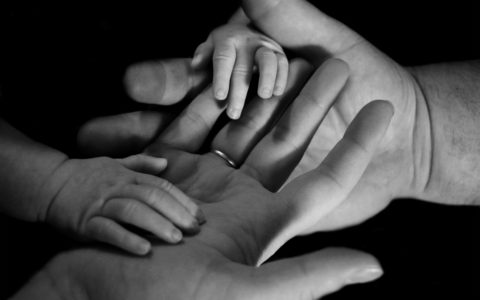How to Help Your Teen with Chemical Dependency
Christian Counselor Spokane
Our hearts are always looking for something to fill us up, an emotion we need to fulfill, whether that emotion is love, joy, hope, or a general feeling of euphoria. However, we sometimes turn to the wrong source and recreate a feeling of peace through a mind-altering substance. The problem is that our complex body systems, knowing we need this feeling, continue to search for it, sometimes against our will.
This new addiction to the feeling then creates a physical desire that can overpower us. Teenagers are at a greater risk. They are coming into their own, discovering themselves, and experiencing overwhelming emotions. Unfortunately, when introduced to a chemical substance that provides that feeling of euphoria, it may be too late for them to stop on their own without help.
Defining Chemical Dependency in the 21st Century
 Chemical dependency is the body’s response to an addiction brought on by a mood-altering drug. This can include illicit drugs, alcohol, prescription drugs, or nicotine. Any chemical substance that the body begins to “crave” in its absence can cause an addiction.
Chemical dependency is the body’s response to an addiction brought on by a mood-altering drug. This can include illicit drugs, alcohol, prescription drugs, or nicotine. Any chemical substance that the body begins to “crave” in its absence can cause an addiction.When a person becomes dependent on this chemical, and it is removed, the person will experience “withdrawal” symptoms. This is not simply a “mind over matter” scenario. The individual will feel physical effects. These physical symptoms of withdrawal can be quite severe and require hospitalization.
What types of drugs can cause withdrawals? Drugs like heroin and cocaine, alcohol, nicotine from tobacco in cigarettes or chewing tobacco, and prescription medications such as methadone, opioids, and other controlled substances on the market today.
Our bodies are made up of complex and wondrous systems. It is dangerous to introduce a chemical that changes these normal functions as it can take a toll on psychological, emotional, and physical levels. Certain chemicals can induce hallucinations, delusions, irregular heartbeat, loss of motor coordination, place the person in a comatose state, or even death.
The following are bodily systems affected by chemical substance abuse. Each one lists common conditions either brought on or exacerbated from chemical dependency:
- Respiratory: pneumonia, bronchitis, asthma, and other respiratory ailments.
- Cardiovascular: rapid heartbeat, slow pulse, chest pain, and/or heart attack.
- Gastrointestinal: nausea, vomiting, acid reflux, ulcers, and severe constipation.
- Musculoskeletal: muscle weakness and muscle cramping.
- Neurological: changes in brain function, seizures, and/or stroke.
- Liver: damage to the liver or hepatitis.
- Kidneys: severe dehydration, damage to the kidneys, and kidney failure.
- Hormonal: hormonal imbalances or can lead to infertility.
This list is not all-inclusive. Individuals with a chemical dependency also place themselves at risk for infectious diseases (often from sharing needles or from multiple sexual partners), bacterial infections, cancer, broken relationships, and criminal behavior.
Understanding Adverse Childhood Experiences
 In understanding where addiction and other varieties of psychological distress come from, it is helpful to understand Adverse Childhood Experiences (ACE). One of the most comprehensive studies about the long-term effects of adverse childhood experiences is the ACE Study. The link in the aforementioned provides a wealth of information on the topic including taking the quiz yourself.
In understanding where addiction and other varieties of psychological distress come from, it is helpful to understand Adverse Childhood Experiences (ACE). One of the most comprehensive studies about the long-term effects of adverse childhood experiences is the ACE Study. The link in the aforementioned provides a wealth of information on the topic including taking the quiz yourself.
From 1995 to 1997, Kaiser Permanente and the Centers for Disease Control and Prevention recruited participants for a long-term study that today is simply knows as the ACE Study. The study ended up using 17,337 participants. No one who established and worked on the study knew that what they were pricing would become the “Holy Grail,” as it were of behavioral health research.
What makes this study so important is that it is replicable, statistically consistent, and the finding that ACE corresponds not only to future addiction outcomes, but mental health and physical disease outcomes as well. For the purposes of this writing, I’ll stay focused on substance use.
What does the ACE Study measure?
The ACE Study asked people if they had experienced any of the following 10 things as a child:
- Emotional abuse
- Physical abuse
- Sexual abuse
- Mother treated violently
- Household substance abuse
- Household mental illness
- Parental separation or divorce
- Incarcerated household member
- Emotional neglect
- Physical neglect
Each of the above experiences that occurred would raise a person’s score. The higher the score, the more at risk a person is for the following, although this list is not exhaustive:
- Alcoholism
- Depression
- Illicit drug use
- Financial stress
- Suicide attempts
- Unintended pregnancies
- Sexual violence
- Poor academic achievement
What can we learn from the ACE Study?
When you look at the first list, you can see that one thing might lead to another. If a child’s mother is abused, it raises the likelihood that the child will be abused as well in some form or another. Emotional neglect can lead to a child becoming the target of a perpetrator of sexual abuse. Household mental illness may mean that a child is physically neglected. It’s difficult to take one aspect of the ACE without tying it to another.
The ACE Study shows us that there are things that will make your child more vulnerable to addiction (etc). As you are looking at your child’s potential ACE score, you can see the places where you need to put more focus and energy.
For example, if your recent divorce has left your child feeling emotionally neglected, you still have time to remedy that situation. Take a close look at yourself and be honest about what you can do to lower your child’s ACE score. The more informed you are, the better decisions you can make. Give your child the best chance you can to become a well-adjusted, high-functioning adult. (Davis, 2020).
A common question I get from parents is, “Hey, isn’t this blaming the parents?” This is an excellent question. The answer, plainly, is “No!” The question is merited, at least in my opinion, due to the fact that there has, in fact, been a trend in psychology, from past to the present, to unduly see the origins of psychopathology in early parenting failures.
 Psychological pathology is a dynamic, multifaceted and exceeding complex topic. My suspicion is that past and present practitioners and researchers become (consciously or unconsciously) frustrated and leap to offering a simple answer to a complex topic. Moreover, the developmental focus of the ACE Study may imply that parents are more or less to blame.
Psychological pathology is a dynamic, multifaceted and exceeding complex topic. My suspicion is that past and present practitioners and researchers become (consciously or unconsciously) frustrated and leap to offering a simple answer to a complex topic. Moreover, the developmental focus of the ACE Study may imply that parents are more or less to blame.
Again, this couldn’t be further from the truth. Often parents have their own ACE or ACEs and are, like everyone, negotiating the complexities of life to the best of their ability. Often, an ACE is entirely outside of the control of a parent or parenting caregiver. There is a variety of reasons that such things occur.
The tough news is that we can say with some certainty that one ACE score does correspond to future pathology, whether it be substance, mental, or physical. The good news is that we do know some of the things that produce ACE scores AND we have effective approaches to working with such things. An ACE score is not fixed; developmental stress and trauma are very workable within the context of treatment and, today, there is a wealth of treatment options available.
Signs and Symptoms of Chemical Dependency
As a parent or guardian, you want to protect and nurture your child from infanthood through the teenage years. Pay close attention to your child if you suspect he or she is chemical-dependent. Signs and symptoms can manifest themselves in behavior, appearance, physical, or psychological changes.
- Behavioral Changes
Your teen may lose interest in hobbies and extracurricular activities or display impulsive behaviors. Teens typically develop issues with anger and will rebel against the authorities in their life such as their parents and schoolteachers. Your child may change their circle of friends or act distant and secretive.
- Appearance Changes
You may notice your child’s poor personal hygiene and unkempt appearance. The sudden disinterest in taking care of themselves is often one of the very first noticeable signs. You may see your child constantly scratching (a side effect of certain drugs) or bruising and cuts (from injection use).
Many teens will begin wearing long-sleeve shirts, even during hot summer days, to cover up any marks from injections. Also, certain drugs, like marijuana when smoked, give off an overbearing scent that sticks to the user’s clothes.
- Physical Changes
Your child’s pupils may change size (from wide-eyes dilation to pin-size) while he or she is on a drug. They may experience other illness-like symptoms such as nausea, vomiting, constipation, and abdominal pain.
A teen with chemical dependency issues may also have excessive sweating, dry mouth or dehydration, and appetite changes that can lead to extreme weight gain or loss. Increased occurrences of illnesses or frequent accidents or falls can be indicative of a substance abuse problem. Some people develop tremors and seizures.
- Psychological Changes
If you notice changes in speech (either talking too fast or slurring their words), extreme mood swings, inability to focus their thoughts, or disinterest in the people and life around them, your teen may be experiencing the effects of a substance.
The Correlation Between Mental Health and Substance Abuse
Our brains control our body’s systems. Chemical substances alter our brain functions and the circuits used to communicate with the rest of our body.
 These chemicals can alter the way our neurotransmitters work and can damage the neurons. Our brains normally create the feelings of euphoria and joy, however, chemical substances imitate our natural neurotransmitters and send a different signal to our body.
These chemicals can alter the way our neurotransmitters work and can damage the neurons. Our brains normally create the feelings of euphoria and joy, however, chemical substances imitate our natural neurotransmitters and send a different signal to our body.
Although a person may feel happy while on a chemical substance like they would with natural serotonin or dopamine, the substance actually sends different messages to the receiving neurons.
A teen is at a greater risk to develop a mental health disorder if they are also chemical-dependent.
You may find it beneficial to select a treatment center that will provide help for mental health and substance abuse since mental health disorder symptoms typically begin to show during the teen years. Since it takes years for the parts of our brains that control our impulses and decision-making to mature, the continued use of chemical substances can inhibit these functions.
How to Approach Your Teen about Chemical Dependency
The best time to approach your teen about substance abuse is before they are introduced to it. If your child is a preteen, let them know they can always come to you if they have any questions and keep those communication lines open. Share with them the dangers of chemical dependency.
Unfortunately, even if we have shared that information with our children, they may still seek the comfort of a substance or give in to peer pressure to try something new. That part of their brains that control impulse (and wisdom) is still developing.
If you suspect that your child has a substance abuse problem, choose a loved one to lean on for support before you speak with your child privately about their noticeable behavior or physical changes.
The important thing to remember is that you do not want to confront your child and make them feel threatened. There is a good chance that they don’t like the side effects of the drugs and are willing to make a change, but they don’t know how. They may be concerned about your rejection and disappointment.
Assure your child that you still, and always will, love them. You want to see them get well. Explain possible options for treatment and listen to them tell you what they need from you.
However, it is critical to note that not all teens are ready to stop using. You should have someone you can call in case the conversation takes a downturn. If your teen is battling with a mental health disorder and chemical dependency, it may be wiser to talk with him or her with another loved one present.
Available Resources for Substance Abuse Treatment
For substance abuse treatment, your primary physician may recommend counseling centers or treatment centers that can provide outpatient, inpatient, or hospitalization. This depends on the severity of your child’s addiction. If placed under prescribed medication to treat a mental health disorder, your child’s care plan team will insist that he or she take the medication as prescribed.
Talk therapy may help a teen recover from chemical dependency as they work through the withdrawal stage and beyond. This may include one-on-one therapy, group therapy, or family counseling sessions.
Using a treatment center that offers spiritual development can help to replace that “lost” feeling your child may feel when they no longer have the drug or alcohol to make them feel wanted or euphoric.
Prayer and meditation can center your teen’s mind and help them clarify reality and truth, especially when dealing with chemical dependency and mental health. A Christian counseling session can point them to the Source of all feelings and the grace to overcome this challenge in their life.
Reference:
Davis, P (2020). Why the ACE Study is Important for Parents https://defendinnocence.org/why-the-ace-study-is-important-to-parents/
“Old and Young Hands”, Courtesy of Liv Bruce, Unsplash.com, CC0 License; “Purple Flowers”, Courtesy of Ales Me, Unsplash.com, CC0 License; “Laughing Women”, Courtesy of Matheus Ferrero, Unsplash.com, CC0 License; “Carried by Mom”, Courtesy of Xavier Mouton Photographie, Unsplash.com, CC0 License





